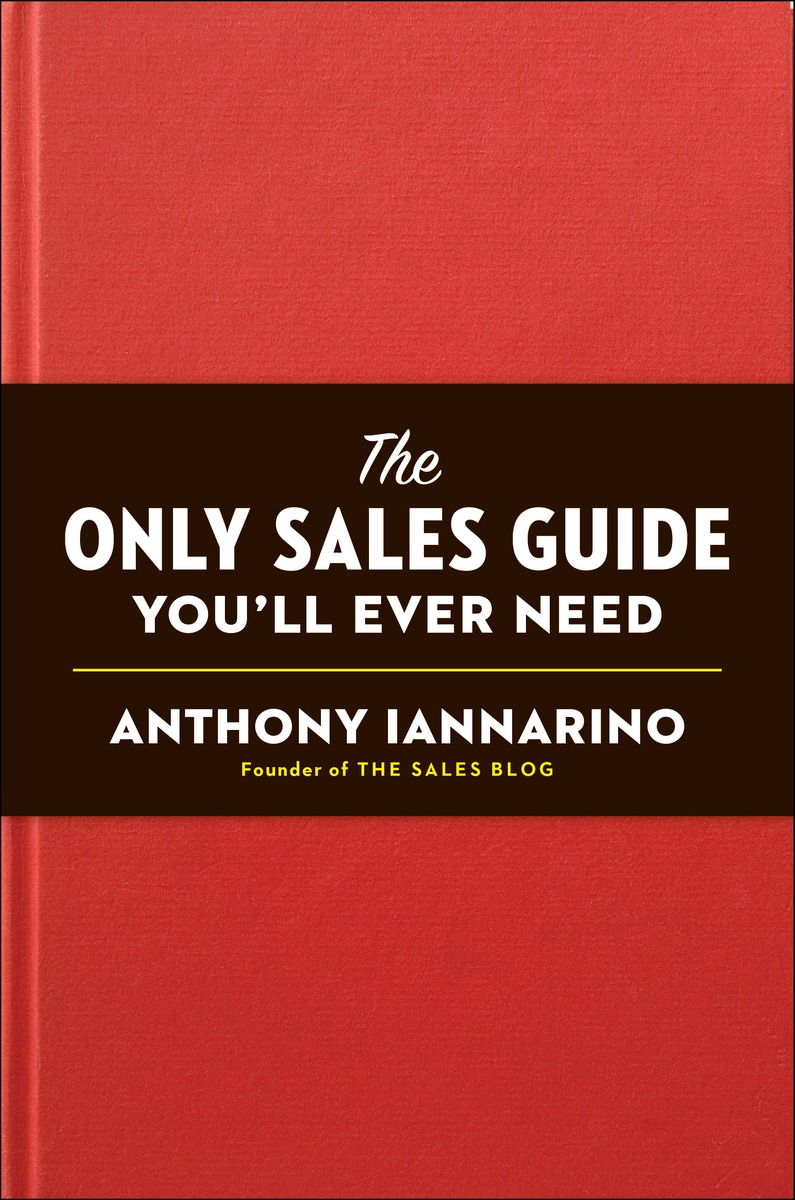You’re No Luke Skywalker: For Career Success Today, It Pays to Play Yoda

Despite the title, Anthony Iannarino’s new book, The Only Sales Guide You’ll Ever Need , isn’t just a sales guide. The book, which is out today, actually contains a number of insights that would be of use to anyone who works in a role that involves influencing other people to take action – and in today’s knowledge economy, that describes a significant portion of office workers.
“This book was written for a couple groups of people,” Iannarino explains. “The first group is anyone who has any kind of role where you have to influence and communicate with people. The second group is managers and leaders of groups of people who sell to or influence others.”
For that second group, Iannarino says, the book is particularly useful as an employee development tool.
“This book should give you a framework or structure for what you’re looking for [in an employee],” he says. “It should help you identify deficiencies or areas of improvement for your team and take steps to correct them.”
A couple months ago, Iannarino and I spoke about The Only Sales Guide You’ll Ever Need. To coincide with its official launch today, we’ve decided to publish a transcript of the conversation, minimally edited for style and clarity.
Recruiter.com: The first question I always like to ask any author is this: How would you describe your book to someone who has never heard of it?
Anthony Iannarino: The book is broken into two parts. The first part is about the mindset required to succeed in sales – or basically in any human endeavor. The second half is about the skill sets required.
We put mindsets first in the book because, if you’re not somebody who has the character to be worth doing business with in the first place, then the second half of the book isn’t going to be nearly as powerful to you.
In the first half, we work on things like discipline, optimism, resourcefulness, initiative, and accountability – mindsets that will help you become somebody who has influence and somebody worth doing business with.
In the second half of the book are the skills like prospecting, closing, leading change, and business acumen – skills you can learn and develop, but that are far more effective if you’re a person with the mindsets outlined in the first part.

IA: If I were just going to add one thing on that subject, it would be that you need the mindset and the skill set together. If you only have the skills without the mindset, or vice versa, it’s really difficult. If you’re really skilled but you don’t have a really good attitude – you’re not other-oriented, you don’t care about other people, and you’re not resourceful – then selling will be really hard for you. You need those two pieces together.
RC: The book includes nine mindsets and nine skill sets. How did you arrive at these particular ones? Out of all possible mindsets and skill sets you could have included, why these ones?
IA: Because I’m an actual sales leader, and I’ve been leading sales forces for a couple of decades. What I’ve noticed is that it’s almost like Maslow’s hierarchy. His whole scheme was about deficiencies, in some ways. For example, if you’re deficient in your physiological needs, you have a problem, and these negative things will happen.
I was sort of noticing the deficiencies in salespeople. There could be a salesperson who has great skills and abilities, but they have no discipline, so they never prospect. I would notice that and say, “This person could be great, and I want this for them, but because they don’t have the discipline, they’ll never be successful until they fix that deficiency.”
I uncovered these mindsets and skill sets by noticing and keeping a running list of the big blocks salespeople face. If you can move those blocks out of the way for people and you can help them get those mindsets and skill sets, they can immediately improve their results.
RC: The first chapter talks about self-discipline, or what you call “the art of me management.” What a great phrase! Can you expand on what “me management” is, exactly?
IA: It has to be a book on its own someday, because I love this concept and everybody who reads this book says the same thing to me: “What is me management? I like it just by hearing the phrase!”
Time is the one completely finite, completely nonrenewable resource we have. No matter how much you try to manage time, the clock relentlessly ticks away — and not in your favor. You can’t manage it, so you have to manage what you do between the ticks. That means you have to be really good at getting yourself to do necessary actions.
In me management, instead of looking at goals, we look at discipline. What are the things you have to do every single day to be the very best version of yourself and produce the results you want? It’s one thing to say, “I want to prospect more this year,” but that’s an intention. It’s not a goal. But if you say, “I’m going to spend the first hour of every day dialing my top 10 prospects,” that’s a discipline.
If you keep that discipline every day – just like diet, exercise, or any other human endeavor – the results are automatic. It’s when we fail to keep those disciplines that we get into trouble. That’s why it’s the first statement of the book. If you get the discipline right, you can get the other attributes and skills you need.
RC: There’s a quote in chapter 10 that really stuck with me: “The stereotypical notion of a salesperson (or a person who makes a living influence others) is a smooth-talking, backslapping, slickly smiling hustler with a shine on his shoes. But today, influence hinges much more on good, solid character.” I’m certainly guilty of holding that stereotype. Can you say more about how things have changed?
IA:Today, it’s about who you want to do business with. Somebody who’s really slick – and you can tell they’re working for their advantage, not yours – is not the kind of person you want to do business with anymore. Now, we’re looking for partners.

No matter what changes about sales from time to time – and there have been lots of changes – the idea of being known, liked, and trusted still matters. You might be super slick and look polished, but if I don’t trust you and you make me feel uneasy, you’re not going to be able to influence people. Real influence comes from somebody who is worth doing business with in the first place; somebody who has influence; somebody you can look at and say, “This is definitely the kind of person I want to bring on my team.”
RC: One of the skills that salespeople need, according to your book, is storytelling. I’m not a salesperson, but I don’t generally associate storytelling with salespeople. Why is storytelling important for salespeople today?
IA: The point I want to make in this chapter is that we have this idea of presenting. We think that we’re walking into a boardroom and we’re supposed to give a TED-style speech.
No one signed on to hear you do a TED-style speech in a sales presentation. What you really need is a story about where you found your prospective client, where they need to go, and how you can help them find their way from where they are to where they need to go.
Nancy Duarte of Duarte actually talks about this : We like to think we’re Luke Skywalker in the story. We’re heroic, and we’re going to tell the story about all the heroic results we’ve produced – but the real way we should be telling the story is that we’re Yoda. We should be the guy helping the customers – they’re the Luke Skywalkers, the stars of the story.
When you flip those roles, it means you get rid of all the slides that show all your awesome office locations and the old white guys on the board of directors and the great logos you’ve had over the years. You tell a better story about how we get there together.

